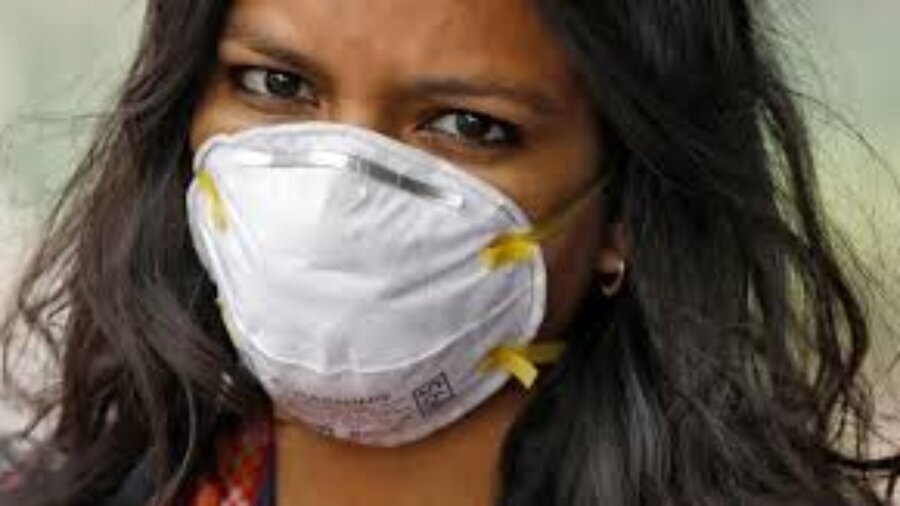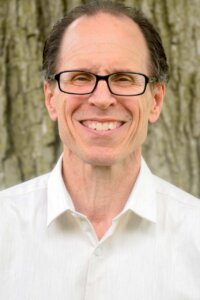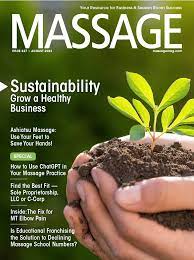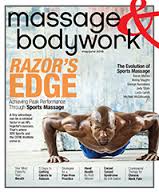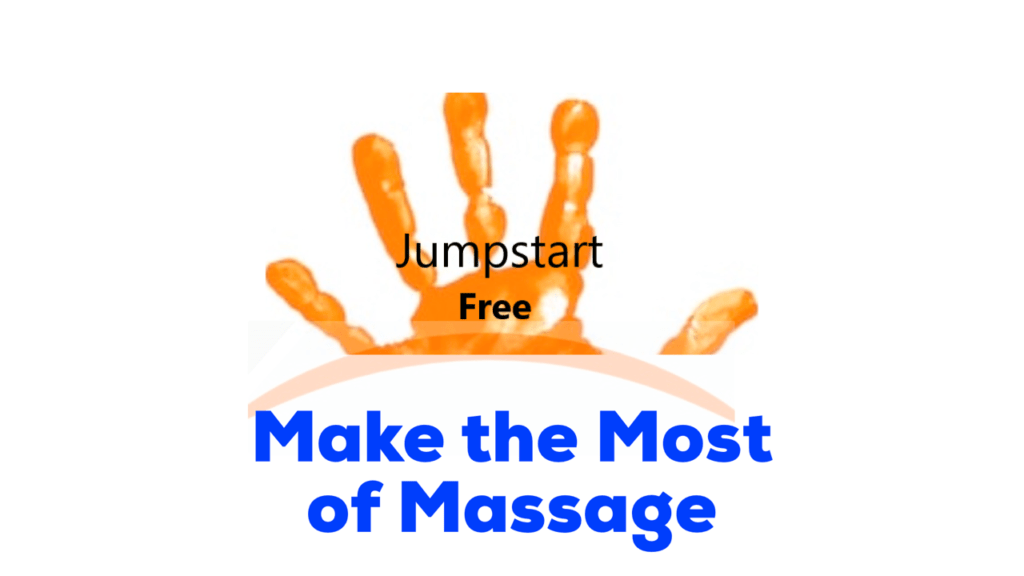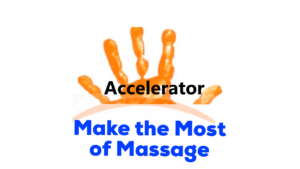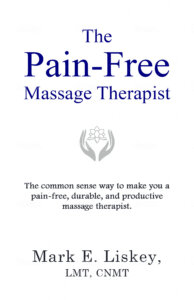Should you wear a N95 mask when doing a massage during Covid-19?
Yes.
Why?
COVID-19 is an airborne illness. The first place to stop COVID-19 from enter your lungs and going into your bloodstream are at the holes where air comes in, nostrils and mouth.
A mask keeps the COVID -19 virus out and if you have it, it can help keep the COVID-19 virus in.
- If N95s are out of your price range or you’re having a hard time finding them, skip to the bottom of this article for some alternatives.
The Research Behind Masks
Recently the CDC stated the importance of a mask in protecting the wearer. And there has been compelling examples from the beginning of this pandemic that masks protect wearers like this one: In July of 2020 two hair stylists in Sprinfield, Missouri tested positive for Covid-19 after interacting with 139 clients and 6 coworkers.
Here’s the important thing: No one they interacted with was known to get Covid-19.
How did that happen?
Most experts think it was because both the hair stylists, fellow employees and customers wore masks.
Studies bolstered this conclusion.
Can you say mask up?
But not with any mask in the massage room. Mask up with a good mask.
The N95 Advantage
According to a Duke study, the best mask to protect the user and the people around the user is the N95.
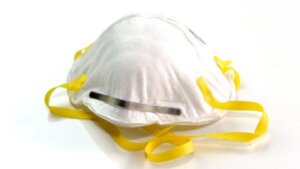
The N95 is a “respiratory protective device designed to achieve a very close facial fit and very efficient filtration of airborne particles.” (Source: FDA).
In fact the N95 is so good that it filters out 95% of airborne particles; hence the numerical part of the name—95.
Think about that for a minute.
Forty-ish percent of people infected with Covid-19 are asymptomatic; so they don’t know they have Covid.
What’s the likelihood that someone climbs on your table with Covid, has no symptoms and you massage him?
Well, without calling in a statistician I think we can all agree that the likelihood increases as the infection rate increases. And right now in the US the infection rate is off the charts.
Now imagine you’re massaging that person in your massage room for a 90 minute massage. That’s a lot of time to be in close contact with someone who’s infectious, right?
Wouldn’t you want a mask that leads the pack in filtering out the airborne particles?
Interestingly, I had a chance to test the N95 out in this exact scenario.
Manut is my Friday, 8 am, 90 minute weekly massage. Covid-19 cases had been swirling around him.
His girlfriend’s son had been diagnosed with COVID-19 weeks prior to him getting on my table as a pre-symptomatic (not exhibiting symptoms yet; the next day he did), Covid-19 carrier. At the time when he was potentially exposed to COVID-19 Manut did a 14 day quarantine. After the quarantine Manut came back to see me for his Friday weekly massage.
Then on a Wednesday he texted me: “Sorry, I’m going to need to cancel. I tested positive for Covid.”
Huh?
I knew that this was coming at some point, and I had been preparing myself for the treacherous fall/winter surge, but it was still unsettling. No work (because I would need to quarantine) AND I might be infected AND I may have re-infected my wife, Lisa, who is a long-hauler.
Shit.
I had spent 90 minutes in the massage room with Manut at close quarters BUT I had on a N95.
My N95 was on the saving-my-ass side.
Long story short, I tested negative for COVID-19 and never had symptoms during my 14 day quarantine, nor did Lisa.
PPE -1, Infection-0.
I say PPE because I wore a face shield as well as a N95. And I had good air exchange in my room. Read more about what I do to stay COVID-safe in the massage room here.
If you’re thinking how do you know that it was the N95 that worked, I’m thinking you’re right. I don’t know. But I do know this: All the measures I took have solid research merit. And since there’s no time for science to figure out which one helps the most, I did them all and I didn’t get infected, which brings me back to my best bud, my N95.
My N95 Mask Procedure
In the massage room I wear a N95 with a disposable medical mask on the outside of the N95. After each massage I change out the disposable medical mask, but keep the same N95 on through the course of the day.
I do this to keep the N95 as “clean” as possible because I don’t throw out the N95 after one use. Instead, I reuse it by rotating it back into my PPE gear after at least a three day air-out period.
During times when the infection and/or positivity rate is not soaring I have three to six N95s I rotate out throughout the week, depending on how many days I’m working.
During high infection and positivity rate times I rotate 2 or 3 throughout a workday to keep them as fresh as possible. That means I need around 10-ish N95s in my rotation cycle.
Taking Care of Your N95
I air-out each N95 that I’m going to reuse in a paper bag instead of a plastic bag to cut down on moisture which could be a breeding ground for bacteria.
Each bag is labeled a day of the week. When the used N95 goes into the appropriate day bag, I then write the date on the bag so that I can keep track of how many times I used that particular N-95.
I give at least 4 days for any virus on the mask to die. These experts recommend 3 – 4 days of airing out.
Getting a Good Seal
The N95 is going to be less effective keeping potential COVID out if you don’t have a good seal around your face. The challenge with getting a good seal is that you’re going to have to do the best you can without having special equipment.
So, let’s get that seal right.
The N95 has two head bands. The lower one goes around the base of your skull. The upper one should ride high on the back of your skull.
In a minute I have a video for you showing you how to put an N95 on and how to test the seal around your face, but before I show you the video I want to share the CDC recommendations for testing your N95 seal. They are the Positive Pressure User Seal Check (exhale) and the Negative Pressure User Seal Check (inhale) test.
Positive Pressure User Seal Check
For the Positive Pressure User Seal Check you are going “Place both hands completely over the respirator and exhale. If you feel leakage, there is not a proper seal.” Go here for the full CDC explanation.
Negative Pressure User Seal Check
For a Negative Pressure User Seal Check you are going to “inhales sharply while blocking the paths for air to enter the facepiece. A successful check is when the facepiece collapses slightly under the negative pressure that is created with this procedure.” This CDC download goes into more detail.
One thing about the Negative Pressure User Seal Check is that you can’t use that test for some N95s, like the Makrite 9500-N95, which is what I use.
The Makrite 9500-N95 is oil resistant so it’s rigid which means this mask is not going to collapse when doing a Negative Pressure User Seal Check.
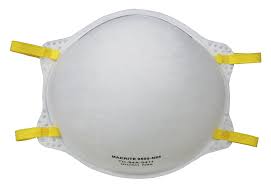
Now for the video, I asked one of my clients, Charley Herbick, trained in N95 fitting, to show us how to get a good seal with the N95.
You can see how he does it in this video (and if you want to see new videos, please subscribe to the Make the Most of Massage YouTube channel):
Taking Off a N95
Now that you have the N95 on, how do you take it off without contaminating your hands with the COVID-19 virus?
Simple.
You don’t touch the mask itself when taking it off. Instead you slip it off using the headbands.
Take the top headband off, then take the lower one off, like in this.
Great, right, now you know how to put on and take off a N95, but where do you get them and how much are they?
Well, they’re not cheap.
But remember you’re going to be reusing them and that will cut down on costs a lot.
N95 Pricing
You’re going to pay about $3.50 t0 $4.50 a mask.
Wait, Mark, I saw some N95s on Amazon for cheaper.
About Amazon and N95s…be careful because there are counterfeits circulating on Amazon.
One way to know if a N95 is a counterfeit is that National Institute for Occupational Safety and Health (NIOSH)-approved N95s have no ear loops. They have headbands.
Personally, I don’t want to risk having a N95 that is faulty.
So, to find a N95 that is NIOSH-certified as a N95 respirator (filters at least 95% of airborne particles) and/or is FDA cleared as surgical mask (liquid resistant) takes a little research.
Start your research here: NIOSH – Approved N95 Particulate Filtering Facepiece Respirators.
In this list you’ll find approved manufacturers and their products.
After you choose a manufacturer/product, you’ll contact them to get in touch with one of their official distributors.
My N95 Search
My research turned up the FDA-approved Makrite 9500-N95 Pre-Formed Cone Particulate Cone Particulate Respirator Mask. It’s both NIOSH certified and FDA cleared as surgical mask (the surgical mask liquid-resistant-clearance is less important for us because we usually don’t slip in a little open heart surgery during our relaxation massage).
Once I found the approved manufacturer I wanted to go with, I Googled them and then contacted them through their contact form.
From there, they put me in touch with an official distributor of their products.
Yes, this is more complicated than simply clicking on an Amazon link, but, again, that easy click yields a world of unnecessary risk in my book–and I don’t want that extra worry that comes with that risk with the 2nd wave coming.
By the way, the price I paid for N95s through an official distributor of an FDA-approved manufacturer was within the price range of the unofficial distributors on Amazon, which was about $4/mask. (Remember, that a box of 20 for $80-ish will last you a two to three months if you reuse them on a rotating basis.)
I’m going to tell you the N95 manufacturer I went with, but before I do that I want to let you know that I am NOT an affiliate marketer of their products and or receive any compensation from them.
So, after searching for a NIOSH certified and FDA-approved N95 mask, I went with the 9500-N95 made by Makerite. The manufacturing company, Makerite, was very responsive.
They put me in touch with this distributor: SPH Medical Supplies.
Tony from SPH got back to me and was very informative and helpful. Ultimately, I purchased the Makerite 9500 N95 and the Sekura N95 also made by Makerite.
The 9500 N95 is both a surgical mask (resistant to fluids) and a respirator.
The Sekura N95 is not a surgical mask, but is a respirator. Again, respirator meets our working requirements–surgical mask is above and beyond.
I ordered the Sekura N95 because it’s supposed to be more comfortable than the 9500 N95.
One more thing to say about getting your N95s: If you hate dealing with the research and have a client or know someone in the medical field, contact that person. She/he may let you order PPE through her/his organization.
If N95s are out of reach for you for whatever reasons, you’ll be okay. There are alternatives.
Alternatives to the N95
KN95
N95 and KN95 are the same in that “both masks must filter out and capture 95 percent of tiny 0.3 micron particles in the air (hence the “95” in the names).” (RollingStone.Com)
The difference between the two is in certification. N95s are certified in the USA and KN95s are certified in China. Because a mask was certified in a particular country doesn’t mean it was made there. For instance, according to Rolling Stone, most N95s are made in China, but are certified in the USA.
The CDC has authorized the KN95 as a suitable alternative to a N95, and KN95s can be cheaper than N95s. Click here to go to a list of FDA-approved KN95 providers.
Here’s something that I’m really excited about—a mask brace.
Mask Brace/Mask Fitter
A mask brace, also known as a mask fitter, is designed to seal a cloth or surgical mask tight around the face. According to the Insider, Dr. John Brooks, the chief medical officer for the CDC’s COVID-19 response, said, “…fitters have been scientifically demonstrated to improve filtration performance by as much as 90% or more, which, again, is getting into that range of filtration efficiency afforded by N95 respirators.”
Proponents of mask fitters draw their conclusion from studies like this one. And if you’re looking for Sabrina Paseman’s mask fitter, the one used in the mask fitter studies (Source: Insider), go here: Fix The Mask.
Personally, I ordered four of them and can’t wait until they arrive.
One more alternative to consider…
Two Masks
According to Insider, not enough research has been done regarding doubling up with masks, but here’s what Dr. Anthony Fauci recently said: “So if you have a physical covering with one layer, you put another layer on, it just makes common sense that it likely would be more effective. That’s the reason why you see people either double masking or doing a version of an N95.” (CNBC)
It also makes sense that two mask would provide a tighter seal, but David Rothamer, coauthor of the University of Wisconsin’s mask-fitter study, says that more studies really need to be done because in some cases more pressure created between the face and the mask due to wearing two masks at once could cause more leakage out the sides and top.
You can test your seal with two masks by putting your hands around the edges of the masks as you exhale to determine if you have more or less leakage than you did with one mask.
Winning Formula
I can’t say 100% for sure that it was the N95 that was the main PPE intervention that prevented me contracting COVID-19 after working on a pre-symptomatic client for 90 minutes because in my little, impromptu experiment, there was no way to tease apart N95 from face shield and good air exchange in the room.
But I do know that medical frontliners wear N95s and that N95s performed the best for preventing droplet transmission.
And that’s enough evidence and incentive for me to double down with wearing a N95 in massage room.
Here’s my COVID-19 safety formula in a nutshell:
Mask up. (Preferably with a N95 or an N95 alternative.)
Face shield up.
Create good air exchange in your room.
And we’ll get through this:-)
To get my latest info, sign up for my free, email group.
